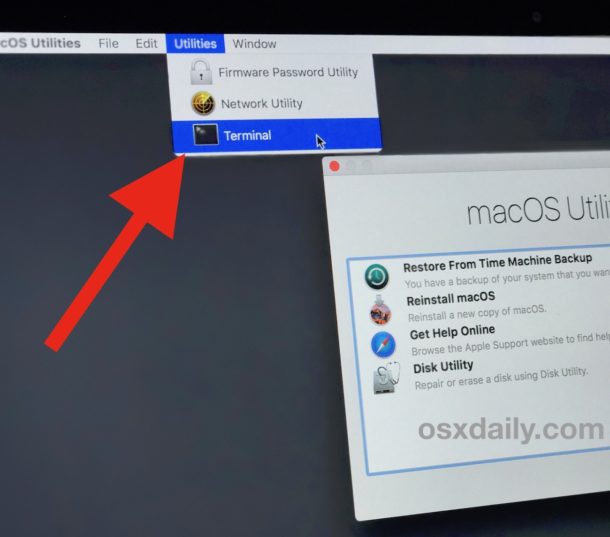
/DiskUtility-576d860a3df78cb62c5d6132.jpg)
- #MAC OS DISK UTILITY REPAIRING FILE SYSTEM HOW TO#
- #MAC OS DISK UTILITY REPAIRING FILE SYSTEM MAC OS#
- #MAC OS DISK UTILITY REPAIRING FILE SYSTEM INSTALL#
- #MAC OS DISK UTILITY REPAIRING FILE SYSTEM UPDATE#
- #MAC OS DISK UTILITY REPAIRING FILE SYSTEM WINDOWS#
If it's fine and still you are facing the error, then just update the system Time & Date with the option of 'Local Apple time server'. To resolve the problem, first, check the system combability for the OS X. If you see the error message similar to 'macOS Could Not Be Installed on Your Computer' that means, either your system is not compatible or the Date and Time settings in your system is not up to date. macOS could not be installed on your Computer

You can fix this issue just by downloading the original OS file from the Apple store and then create a fresh bootable USB using the same.
#MAC OS DISK UTILITY REPAIRING FILE SYSTEM INSTALL#
In such case, just cross-check the system requirement for the OS you want to install on your Mac system. If you are upgrading the OS X after having an older version, you can get the compatibility error message.

#MAC OS DISK UTILITY REPAIRING FILE SYSTEM MAC OS#
Mostly, this error happens when you download Mac OS file from an unauthorized site. If you see the message like 'Could Not Write Installation Information to Disk' when you are trying to install the OS, it means, some important files are missing from the bootable USB device. Quick Troubleshooting Tips if You Got Stuck during MacOS Installation Could not write installation information to disk Step 9: After signing in, you can access the several products of Apple such as iCloud, DropBox and many more. Step 8: As you are using the fresh copy of MacOS on Mac machine, so you need to set up the OS and for that connect the Mac with the Wi-Fi and then sign in with the Apple account. This will take 30-45 minutes and once it gets completed, restart Mac. Step 7: After that, click on the 'Continue' button to start the installation process. As soon as the process starts, it will provide Terms and Agreement page and your job is to agree with the same and then click on the continue button. Step 6: Now, the configuration of MacOS will start. Step 5: Further, go to the Startup Manager, move to the External drive section, and select your bootable macOS USB drive. Step 4: After the completion of the formatting process, go back to the macOS utility section and this time, select 'Reinstall macOS'. Pleasec choose APFS (macOS) or Mac OS Extended (Journaled) for old version Mac OS X. Step 3: You will get a couple of options from the Format. From the Disk Utility app, select Mac drive name under Internal section and then click on the 'Erase' button. Step 2: You will be directed to the macOS utility section and here you need to select 'Disk Utility' to format the USB drive. Step 1: Shut down your Mac and press the Power key to turn on the Mac then immediately press Command and R keys. You have to boot Mac into Recovery mode and format the hard drive or SSD to Apple file system first. If the drive was not partitioned or the partition table was corrupted, then you can not install macOS on Mac with the normal way.
#MAC OS DISK UTILITY REPAIRING FILE SYSTEM HOW TO#
How to Install macOS on Mac from USB Drive (Advanced) Step 5: Agree the terms and conditions and wait for the installation process to be done. Click the drive name of your macOS bootable USB to start the installation process. Step 4: You will see all bootable devices attached to this Mac, including Macintosh HD and external USB or DVD. This will bring up the Startup Manager on Mac. Step 3: Hold the Power and Option key simultaneously for 15 seconds. This will make sure the Mac is powered off. Step 2: Shut down the Mac and wait for 1-2 minutes. Step 1: Insert the macOS bootable USB drive on a USB port of Mac computer. If the target Mac computer already had a macOS or OS X on it, then installing macOS from USB is straightforward and this is called the normal way. How to Install macOS on Mac from USB Drive (Normal Way) Even you had issues during this process, it is not thing to be afriad as we have offered the troubleshooting guide as well. We will share detailed steps on how to install macOS/Mac OS X from an USB drive. So many Mac users don't know how to perform a clean install of macOS on their Mac when the device was broken or could not boot into desktop.
#MAC OS DISK UTILITY REPAIRING FILE SYSTEM WINDOWS#
This is not normal case because macOS is very stable and have less bugs/virus than Windows PC. Wondering why the Question mark flashing on the screen when you boot it up, learn how to reinstall the OS through Internet Recovery.Īfter successfully created a macOS bootable USB, the next step is how to use it to install macOS from external USB drive. Click the Erase button (MAKE SURE YOU DO HAVE BACKUP) Format: Choose Mac OS Extended (Journaled) Scheme: Choose GUID Partition Map. Select Disk Utility from the utilities window of macOS Recovery, then click Continue.


 0 kommentar(er)
0 kommentar(er)
